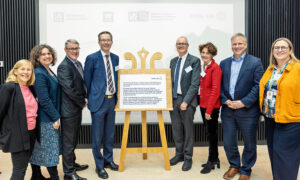European centre of excellence for mouse biology celebrates its 10th anniversary

Mice are one of biology’s most important model organisms, because 98% of their genes and many of their traits and diseases are similar to ours. Researchers at the Mouse Biology Unit of the European Molecular Biology Laboratory (EMBL) take advantage of these similarities and use mice to study molecular mechanisms of health and disease that also apply to humans. Today the EMBL Mouse Biology Unit in Monterotondo, close to Rome in Italy, celebrates its 10th anniversary.
The EMBL Mouse Biology Unit was founded in 1999 on the ‘Adriano Buzzati-Traverso’ International Scientific Campus in Monterotondo to exploit synergies and encourage collaborations with the European Mouse Mutant Archive (EMMA), the International Centre for Genetic Engineering and Biotechnology and the Institute of Cell Biology operated by the Italian National Research Council (CNR), and to jointly create a European centre of excellence and innovation in mouse biology on the campus.
“Mouse biology bridges the gap between basic research in the life sciences and human medicine. Sequencing the human genome has identified many genes that are involved in causing diseases, but to harness this knowledge for medicine we need to know what exactly the genes do. Together with our neighbour institutes in Monterotondo we have gathered all the expertise, infrastructure and technologies necessary to address these questions in mice,” says Nadia Rosenthal, who took over as Head of EMBL’s Mouse Biology Unit from internationally renowned immunologist Klaus Rajewsky in 2001.
“EMBL has been an important addition to the Monterotondo campus and has contributed to developing and internationalising Italian biological and biomedical research.We are looking forward to many more years of fruitful collaboration,” says Glauco Tocchini-Valentini, Head of CNR-EMMA International Activities on the Campus.
Scientists at EMBL’s Mouse Biology Unit investigate a broad spectrum of basic research topics and over the past 10 years have generated mouse models of over 20 different human diseases, including heart failure, stroke, leukemia, diabetes, Alzheimer’s disease and multiple sclerosis, as well as mental and behavioural disorders such as depression and anxiety. The Mouse Biology Unit also provides a wide array of services and technologies to the European scientific community and is part of various Europe-wide initiatives for mouse biology.



